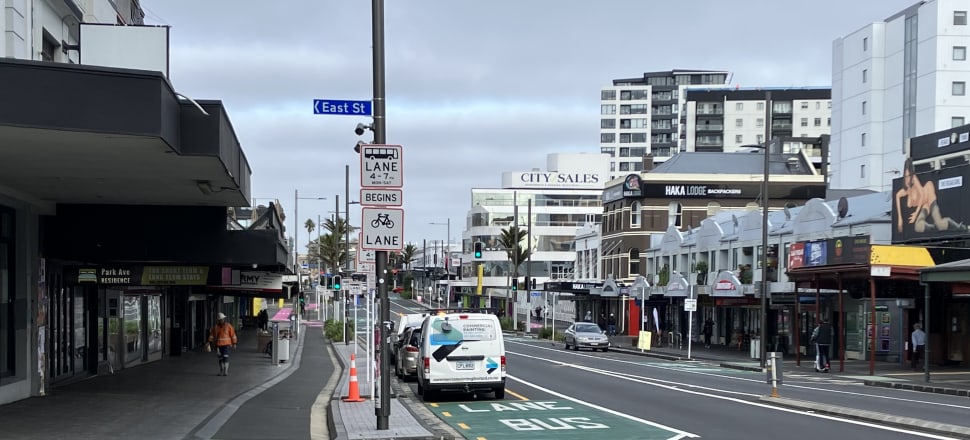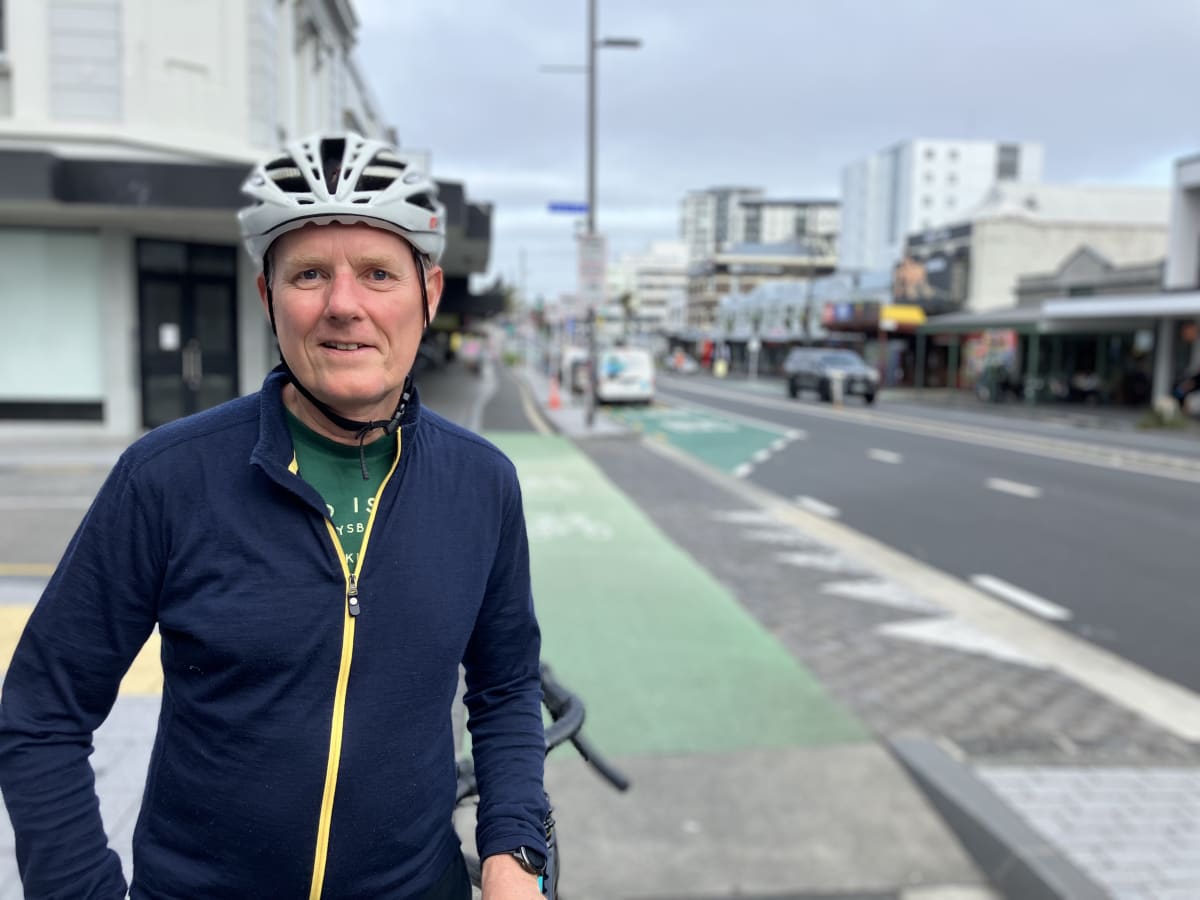
Critics of multi-million dollar cycleways in our major cities like to disparage them with the term "gold-plated". But advocates and transport planners say that's an unfair label, given the infrastructure improvements that often accompany the new bike lanes.
The building of "gold-plated" cycleways is a contentious issue in our biggest city, with the $30 million dollar transformation of Auckland's iconic Karangahape Road firmly in the spotlight.
Despite business support at the start, many rebelled when the construction took so long – around six years from the early planning stages to the project's completion.
Auckland Transport's head of cycling Adrian Lord tells The Detail they've "changed the entire road system" and created a better environment for everyone.
"It used to be five lanes of traffic, it's now four lanes, plus [a] cycleway on either side and widened footpaths. We can't do the cycle lane in isolation in this kind of environment. We also put in what we call rain gardens, so it's planted areas that help protect against the floodwater and we put in some street trees as well to make the place look more attractive and a bit of shading."
Lord hates the term ''gold-plated''.
"Why wouldn't you make one of the most famous streets in Auckland actually look better and attract more people?
"A lot of the money in these schemes goes towards the underground works the minute that we put a spade in the ground. Right beneath your feet we've got electricity cables, we've got fibre optic cables, we've got all the communications, we've got the drainage, which might, in this case, date back to the 1920s.
"A lot of things go on under the ground that you never see at the end of it. The only manifestation of that you see is we upgraded the street lighting to get it up to modern standards."
Lord says the project's $30 million price tag was "right at the top end at what we would normally spend per kilometre ... our normal run-of-the-mill cycle schemes are about a tenth of that."

Lord says the cost of the Karangahape Road transformation, and other cycleways, needs to be kept in perspective. Cycling only gets about 1 per cent of Auckland Transport's 10-year-budget of $37 billion.
"Over 10 years, we've got a budget of $306 million ... we also piggy back on other projects, for example, we're building the eastern busway out from Panmure at the moment, it's probably our biggest infrastructure investment in cycling, but it's not really coming out of the cycling budget ... it's just being built along a dedicated busway."
Cycling Action Network project manager Patrick Morgan says cycleway spending often gets tied in with other projects across the country.
"Cycleway projects include a whole lot of project costs, but they're called cycleways.
"For example, in Wellington, Waka Kotahi is investing around $200 million on a 4km section of seawall to protect the highway and the railway line. On top of that, there'll be a shared walking and bike path.
"But most of the cost is building the seawall which is underneath the shared path. We're seeing this again and again in New Zealand, increasingly we have to protect our infrastructure from sea level rise, that's a good thing to do, but councils need to be very transparent about where the money's going to."
Nevertheless, despite the upgrades, the number of people using the cycleways remains modest.
"For most people, they don't ride a bike, it's not part of their life so they see it as irrelevant," Lord says.
"[But] for most short journeys - about 60 percent of journeys across the entire city are less than three kilometres - you're almost certain to be quicker on a bike, so just purely for selfish reasons, jump on a bike, give it a go, you don't have to worry about finding somewhere to park when you get there ... it is a massively most convenient thing."
Morgan believes communicating the positive values of cycling, rather than the minor negative spinoffs, will help promote it.
"Let's start talking about what we value in our cities - safe streets, a community that's connected, looking out for each other, those are the things that most people can agree on. Starting off about talking about where's this bike lane going to go and how is it going to affect parking, that's not a very helpful way to start.
"We have an opportunity now to invest in making our streets better, safer, more convenient and lovelier places that will also keep our air and our water cleaner. I think most people would agree that that's a really good investment."
Hear more about cycling infrastructure in the full podcast episode.
You can find out how to listen to and follow The Detail here.
You can also stay up-to-date by liking us on Facebook or following us on Twitter.








